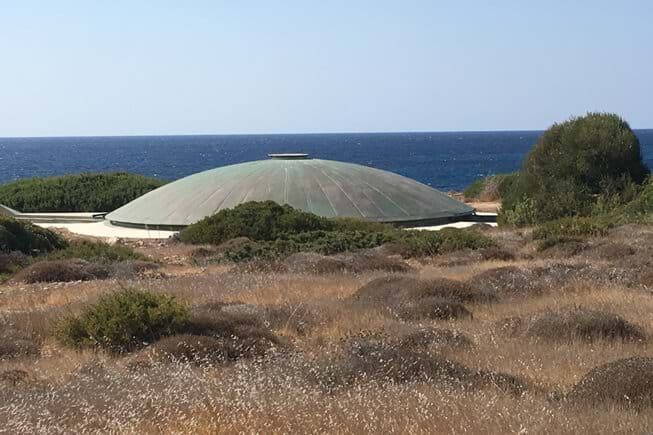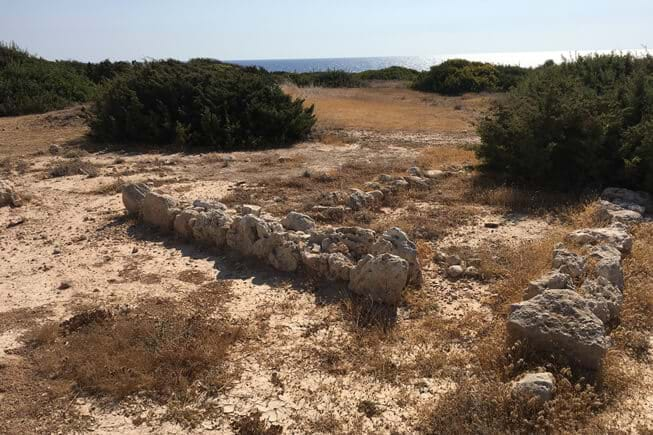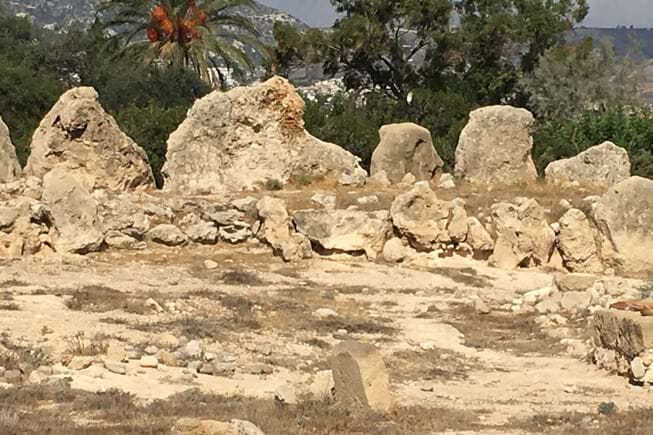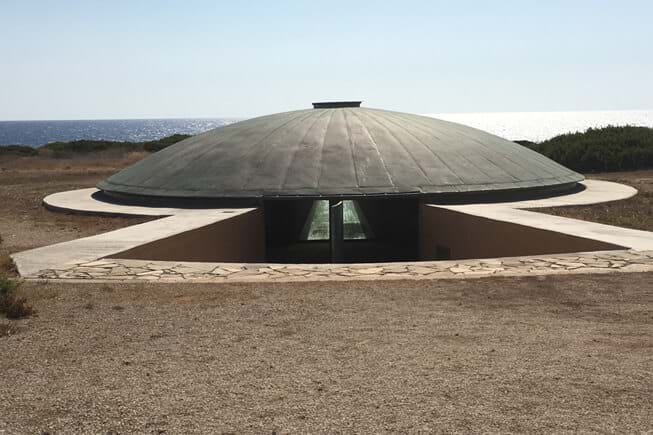Just a few kilometres northwest from Pafos is the archaeological site of Maa-Palaiokastro and the adjacent Museum of the Mycenaean Colonisation of Cyprus. A thin peninsula high on cliffs overlooking the sea, the site enabled its inhabitants to see approaching ships and protected them from invaders. Excavations reveal protective stone walls at both the landward and seaward sides of the peninsula. The outlines of the settlement can be traced by exploring the foundations of numerous stone houses and larger public buildings. The architectural features of these structures, along with objects found within them made of clay, stone, and metal, bear characteristics of Mycenaean Greece. During the 13th century BCE, the Peloponnese was in economic decline and many Greeks moved eastward in search of more favourable circumstances. During this period groups of migrants arrived on Cyprus and joined existing settlements or created new ones; Maa-Palaiokastro was one of the latter. The museum here tells the story of the Mycenaean colonisation and the growth of Cyprus during the Late Bronze Age (1230-1050 BCE). Due to its rich deposits of copper, the island emerged as a key trading partner in the region. Maps show settlements and trade flows in the Mediterranean during the era, while texts with illustrations explore language, writing, religion, and material culture. The museum structure, built in 1996, is itself of interest: set underground and capped by a bronze dome, it blends in with the surrounding landscape. The archaeological site and museum work together to explain the history of the island’s hellenisation.



